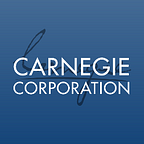National Voter Registration Day: What’s Next?
by Joanne Omang
An interview with Nonprofit VOTE’s Brian Miller
Nonprofit VOTE, which provides resources to nonprofit organizations to help them integrate nonpartisan voter registration and participation efforts into their ongoing work, has now assumed management of the nonpartisan National Voter Registration Day (NVRD), which for 2017 is set for September 26. Nonprofit VOTE’s executive director Brian Miller recently discussed this transition with Washington writer Joanne Omang.
JOANNE OMANG: What changes are you planning?
BRIAN MILLER: Nothing fundamental. We’re organizing to position the day in a stronger and more self-sustaining place this year for the local elections, and then especially for the 2018 midterm races. Last year National Voter Registration Day registered more than 770,000 people and that’s huge, but if we want a really inclusive democracy we have to make a special outreach and lay the groundwork for a big ramp-up in 2018 — a civic holiday every year.
OMANG: Aren’t online and automatic motor-voter registrations more or less taking over this work?
MILLER: It’s true that online platforms have been great at getting large numbers of people registered inexpensively, but they still only reach folks who are already inclined to register and who need only a little nudge, a Facebook posting, a Google Doodle — the low-hanging fruit, if you will. More than 30 states have online platforms now and it’s likely that all of them will by 2020, and that’s great. But it’s not a substitute for the field worker going out to look people in the eye — people who sat on the sidelines, who felt disempowered or were confused or discouraged about how to participate — and telling them, “Your opinion matters. You need to be engaged. Here’s a registration form, here’s where you can vote.” Particularly in lower-income and immigrant communities or where not everybody has computer access.
Even with automatic motor-voter registration, which is great and should be implemented more broadly, we still need face-to-face contact from trusted messengers to ensure people get involved in the voting process. We provide nonpartisan resources and how-to guides to help nonprofits serve as that trusted messenger, and it works. Our studies show that people who are registered to vote by nonprofits — these people vote at rates five to 15 points higher than comparable voters of the same demographic who registered other ways.
OMANG: Is that a lesson you learned from the poor turnout by young people last year?
MILLER: Actually, there wasn’t a significant drop in youth turnout. Our report America Goes to the Polls 2016 showed that 50 percent of the 18- to 29-year-olds in the voting-eligible population turned out in 2016. That’s below the 66 percent turnout by people 30 or older who were eligible, but it’s the third-highest youth rate since 1972, the first year that 18-year-olds were able to vote — and bigger than in 2012.
OMANG: So how can philanthropy help make an impact?
MILLER: That kind of person-to-person work costs money. First, funders can directly support voter engagement with a grant portfolio for the outreach workers’ recruitment and training, for their clipboards and transportation and stipends — all the way through to get-out-the-vote efforts. Then they can also look at their RFPs (Requests for Proposals) and their MOAs (Memorandums of Agreement) with the groups they fund, the ones we call the “trusted messengers” — the YWCA, Planned Parenthood, the other nonprofits people trust and go to for services or fun — and ask things like, “What will you do to engage the community you serve in the democratic process, in voting?”
They can rewrite the language in their grants to make it clear that nonpartisan voter engagement and advocacy are fine within the context of the law, and even encouraged. It’s important for funders to point out that, for example, part of doing good environmental work or health care or whatever is getting voters engaged in the political process that affects all of those issues. The Council on Foundations has good model MOA language that foundations can follow.
And then of course any funder can become a partner with National Voter Registration Day, like many other nonprofits do. Distribute materials to their grantees, encourage them to sign on as partners, hold webinars, give resources to help, and so on. Just visit the website: National Voter Registration Day.
__________
Check out Make it Weird: Getting the Youth Vote Out, an interview with the Bus Federation’s former director, Matt Singer.
Joanne Omang is a Washington-based writer.
